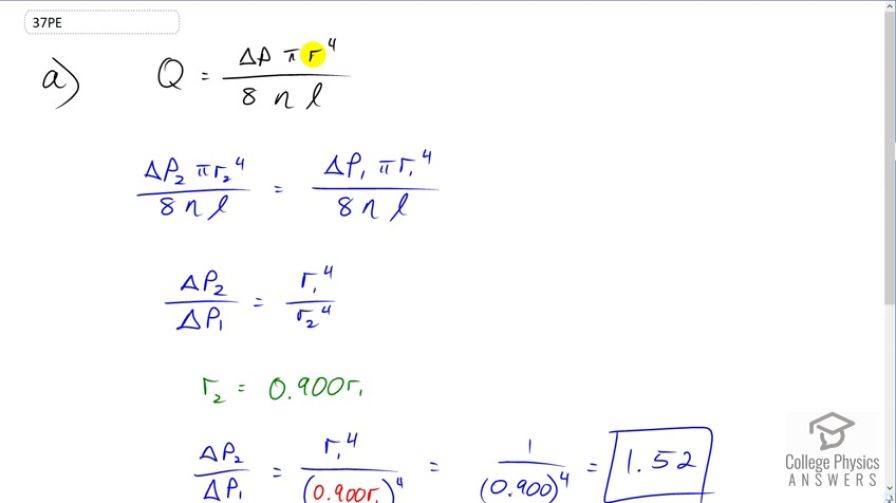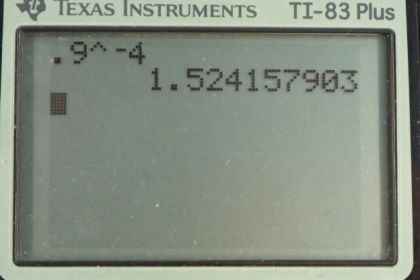Question
(a) Suppose a blood vessel's radius is decreased to 90.0% of its original value by plaque deposits and the body compensates by increasing the pressure difference along the vessel to keep the flow rate constant. By what factor must the pressure difference increase? (b) If turbulence is created by the obstruction, what additional effect would it have on the flow rate?
Final Answer
- Turbulence decreases flow rate, so the pressure would need to increase even more to compensate.
Solution video
OpenStax College Physics for AP® Courses, Chapter 12, Problem 37 (Problems & Exercises)

vote with a rating of
votes with an average rating of
.
Calculator Screenshots
Video Transcript
This is College Physics Answers with Shaun Dychko. Poiseuille's Law says that the volume flow rate is the change in pressure between the two ends of a blood vessel, times pi times the radius to the power of four, over eight times the viscosity of the fluid, times l, length of the blood vessel. Now, these two volume flow rates are going to be the same after the radius decreases to 90 percent of what it was before, the pressure has to increase in order to compensate for that such that the volume flow rate is the same in case two as it is in case one. Our job is to figure out what is the factor by which the pressure changes. So we have a lot of common factors that will cancel on both sides and we're left with delta p two over delta p one is r one to the power of four over r two to the power of four. So I multiplied both sides by one over delta p one r two to the four. Okay, and then we know that r two is 90 percent of r one. So that's 0.900 times r one and we'll substitute that in place of r two here. This works out to r one to the power of four divided by r one to the power of four so those cancel making a one on the top, and then divide by 0.9 to the power of four. So this is the ratio of the pressures and the ratio of pressures is 1.52. So it's interesting that pressure two is an increase of 50 percent -- it's an increase of 52 percent versus pressure one, whereas the radius in the second case, is a reduction of only 10 percent compared to r one. So plaque in arteries makes a big difference to blood pressure. So turbulence if there was some, would decrease flow rate because turbulence means that fluid is flowing in lots of different directions, sometimes even backwards. So it's going to have a slower flow rate than if it was smoothly moving always forwards as it would in laminar flow. So the pressure would need to increase even more to compensate for that reduced flow rate due to turbulence.
